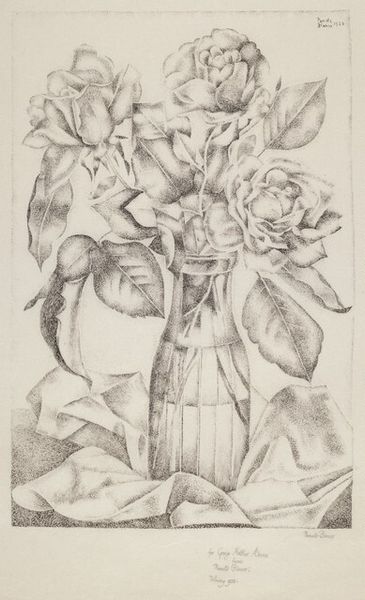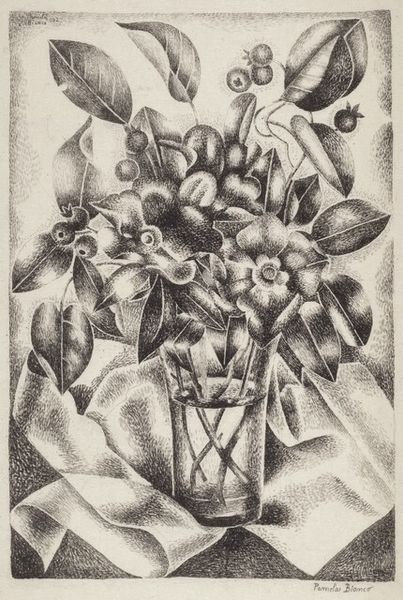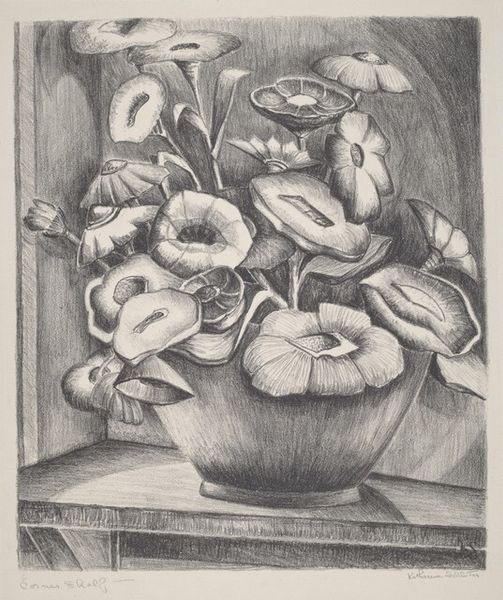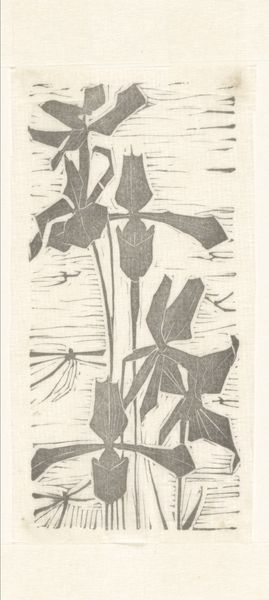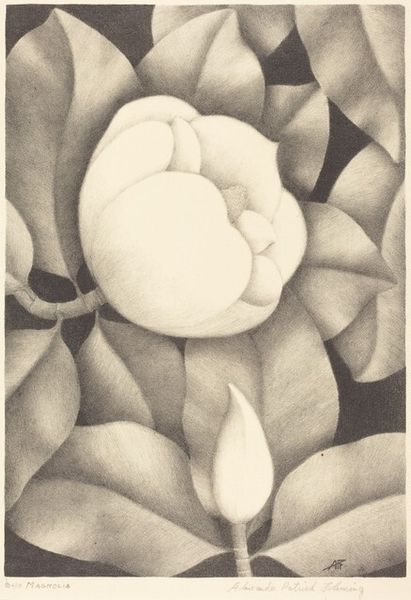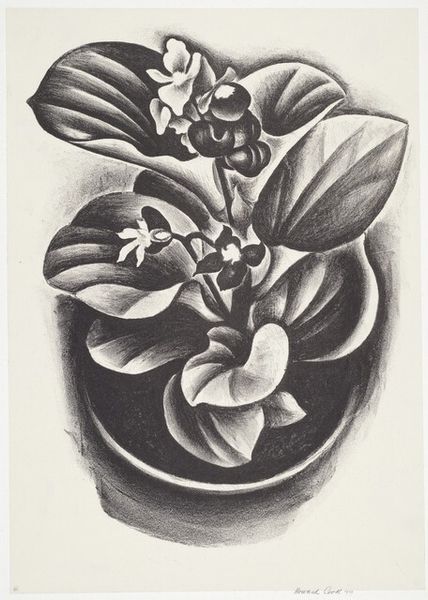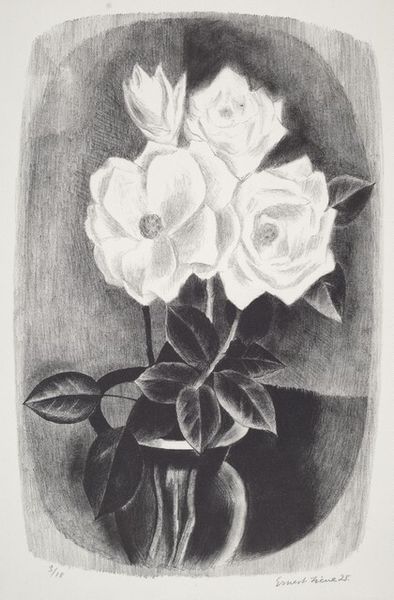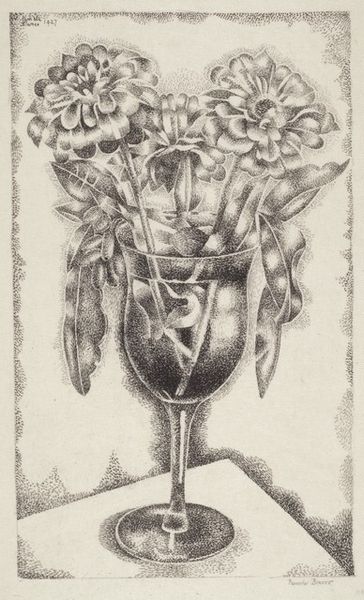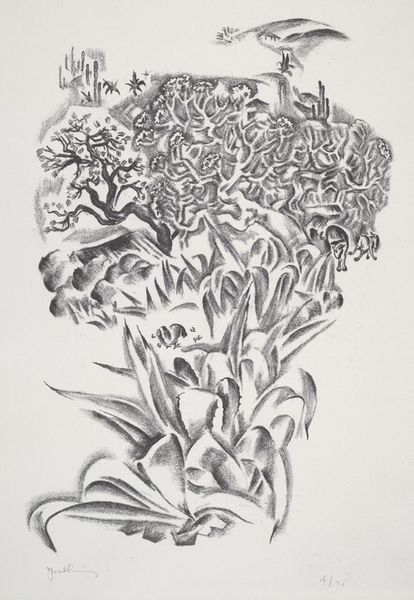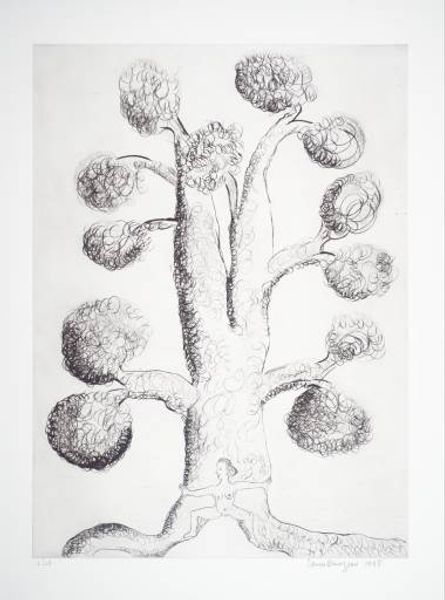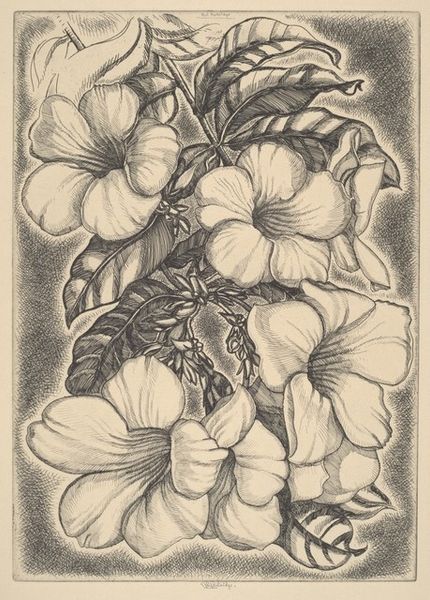
drawing, print, pencil
#
drawing
# print
#
pencil drawing
#
pencil
#
naturalism
Dimensions: image: 137 x 305 mm paper: 241 x 375 mm
Copyright: National Gallery of Art: CC0 1.0
Curator: This is Charles Winstanley Thwaites' "Pitcher Plant," created in 1938. The work is a pencil drawing, also produced as a print, showcasing a fascinating botanical subject. What are your initial impressions? Editor: A kind of contained drama. The image space is dense, almost claustrophobic. There's a relentless repetition of forms—the hooded pitchers themselves. Curator: Right. And consider the historical context. Done under the Federal Art Project, the piece speaks to an interest in cataloging and celebrating the natural world, even amidst economic hardship. The pitcher plant, specifically, has potent symbolism. It lures and traps—a carnivorous emblem in a still life. What readings could that trigger, do you think? Editor: Well, the visual effect—this crowding—evokes tension. There is a clear emphasis on texture, especially through the skillful pencil work. The tonality also underscores something ominous in a rather unsettling yet compelling way. Curator: Precisely. It disrupts any straightforward pastoral reading. These aren't merely beautiful flowers; they embody predation. One is led to contemplate more than just the plants—this symbolism transcends mere biology, reaching psychological implications. Are these depictions of entrapment linked to societal angst during the Depression era, for instance? The visual encoding resonates long after we consider the subject of botany. Editor: I'm seeing this too now! Look how the sharp vertical lines of the stalks juxtapose with the round shapes of the traps below, intensifying that feeling of being constricted and threatened. Even the negative space serves the dynamic— it’s a structured dance of capturing. Curator: An evocative thought. This artwork demonstrates an almost preternatural sensitivity to these plants. Do we sense a tension here – an early ecological warning even – concerning the treatment of nature? Editor: Quite possibly. Viewed closely, the careful compositional elements undeniably amplify that message, which may have faded through layers of history and reception. Curator: Well, thinking about it now, it’s something I'll certainly mull over myself next time I see one in person!
Comments
No comments
Be the first to comment and join the conversation on the ultimate creative platform.
